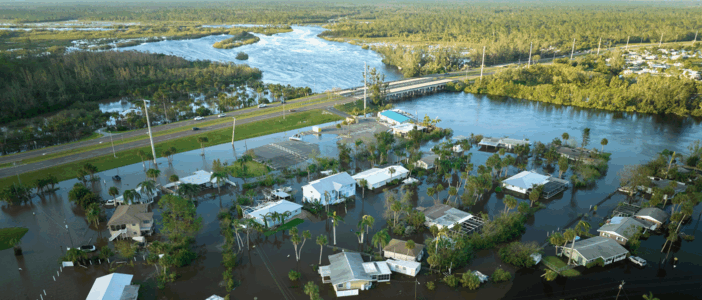
The risks are rising — and so is the need for better coverage conversations
Catastrophes continue to make headlines, yet many still view them as distant events unlikely to affect their own lives. Take the 1994 Northridge earthquake, often remembered as California’s most significant seismic event. But seismic activity hasn’t slowed: a magnitude 6.4 earthquake struck Northern California in 2022, followed by a 7.1 in Southern California soon after, and more recent activity has been recorded off the coasts of Oregon and Washington. These aren’t isolated events. They reflect a growing risk, and a need for better coverage conversations.
Bridging the coverage gap
Helping homeowners protect against catastrophe risks starts with closing the education gap. Many remain unaware that a standard homeowners insurance policy typically excludes coverage for flood and earthquake. Others assume FEMA aid will fully cover their losses, not realizing that federal aid usually comes in the form of loans that must be repaid.
“When it comes to catastrophes, the reality is that it’s not an issue of if, but when,” says Steve Bouker, founder of Arrowhead’s Residential Earthquake Program. “Yet, one of the biggest issues with increasing the penetration of flood and earthquake policies by homeowners is ‘recency bias.’
“When a well-publicized catastrophe occurs, we see a healthy uptake in residential earthquake coverage. But with the passage of time, and as homeowners make their budget choices, some attrition does occur as the incident fades from memory.”
Patricia Templeton-Jones, president of Wright Flood, an Arrowhead Programs company, notes similar trends for flood insurance. “While homeowners with a federally backed mortgage are required to have a flood policy if they’re in a flood zone, those who are not required are increasingly making the riskier decision to self-insure,” she says.
“To provide agents with more tools to help tailor flood insurance coverage, we offer private flood options, including our FocusFlood program, in addition to the NFIP. Wright Flood’s offerings allow agents more flexibility to meet their customers’ needs.”
Related: The rising importance of flood insurance in a changing climate
Shifting the risk conversation
Outdated flood maps are no longer the basis for determining insurance premiums. With the introduction of Risk Rating 2.0, FEMA’s updated pricing methodology for the National Flood Insurance Program (NFIP), flood insurance rates are now calculated based on each property’s specific risk, not just zone designations. This shift has created a new challenge: helping homeowners understand their exposure in areas that may not have seen flooding in the past.
Despite knowing a property’s flood risk, many homeowners develop a false sense of security simply because no prior flooding incident has occurred in their area. A recent example is Hurricane Helene, which swept through the Gulf of Mexico in September 2024. While it impacted Florida and Georgia directly, it also brought intense rainfall and unprecedented flooding to western North Carolina, eastern Tennessee and southwestern Virginia — regions not typically associated with flood risk.
Both Bouker and Templeton-Jones agree agents play a vital role in helping customers understand the potential financial impact of an uninsured catastrophe. By putting risks into context and outlining how coverage can protect financial security, agents help clients make informed decisions.
Given the financial consequences of being underinsured, prioritizing flood and earthquake insurance may be more prudent than relying solely on other risk management strategies.
Related: Mitigating risk in sports and entertainment
Guiding smarter coverage decisions
Recognizing the importance of informed conversations, both Arrowhead and Wright Flood provide fact sheets and other resources to help agents share information that resonates with homeowners.
“We have found that if agents invest the time to educate their customers, responsible homeowners will be much more likely to purchase catastrophic coverage,” says Bouker. “Agents can help them craft their approach regarding deductibles and the policy limits. By helping the homeowner manage their trade-offs, it also increases the agent’s retention levels.”
While catastrophic events are less frequent than other perils, their financial impact can be devastating. That’s why it’s essential for agents to help homeowners weigh their risks and make coverage decisions based on current, accurate information — and be the trusted voice guiding them toward long-term protection.
© 2025 Copyright Arrowhead Programs. All Rights Reserved.
This material has been prepared for general informational purposes only, is intended to apply generally rather than to any specific company and presumes appropriate discretion will be exercised regarding any particular situation.

